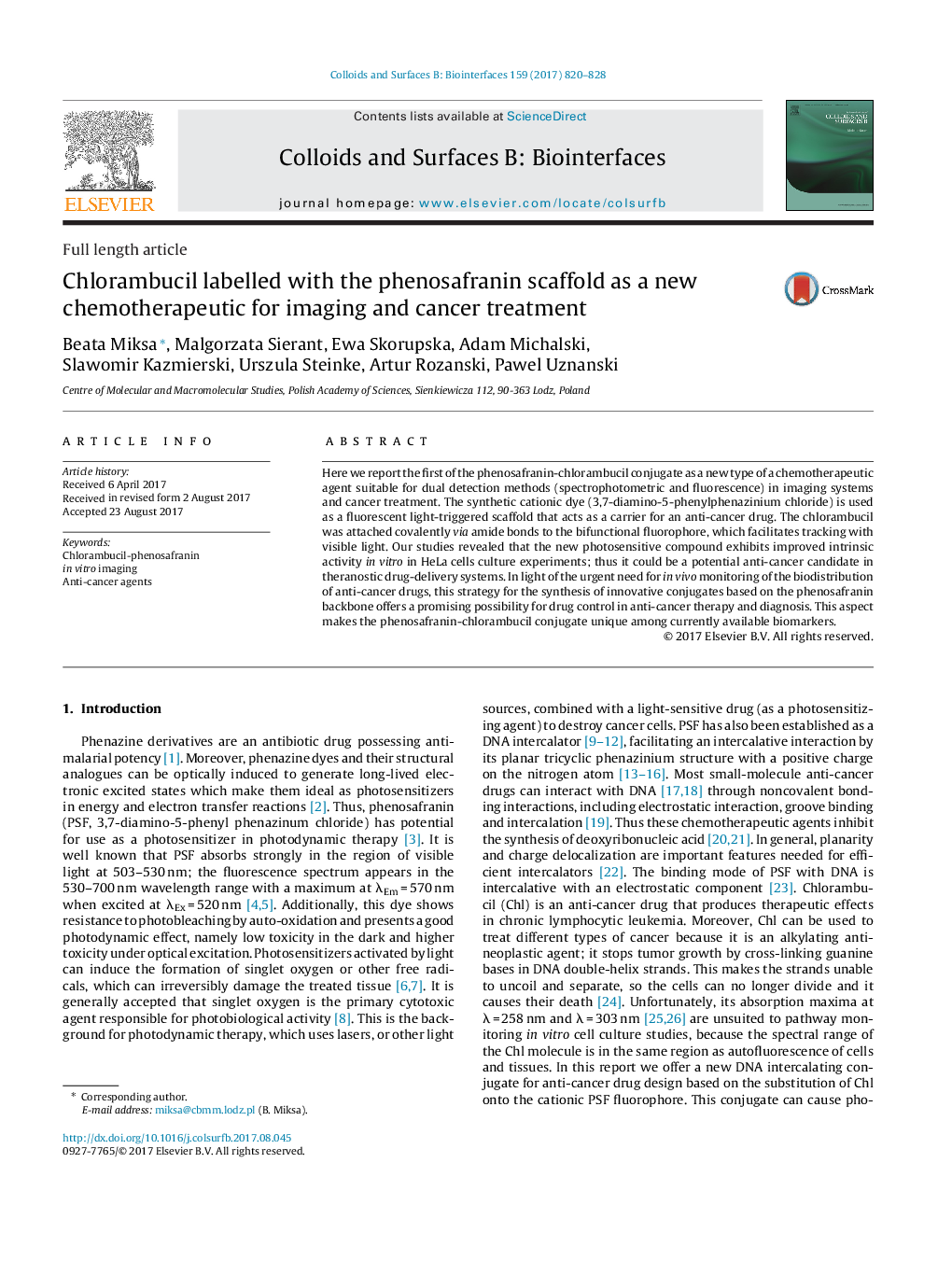| Article ID | Journal | Published Year | Pages | File Type |
|---|---|---|---|---|
| 4983001 | Colloids and Surfaces B: Biointerfaces | 2017 | 9 Pages |
â¢The new chemotherapeutic agent consisted of a chlorambucil labelled with a phenosafranin scaffold was synthesized.â¢The theranostic probe can be monitor in visible light at â¼496 nm useful for imaging systems in cancer treatment.â¢The fluorescent chlorambucil-phenosafranin was encapsulated in liposomes from DMPC phospholipids used as a carrier.â¢We report that the new theranostic agent exhibits a cytotoxic activity in vitro in HeLa cells culture experiments.
Here we report the first of the phenosafranin-chlorambucil conjugate as a new type of a chemotherapeutic agent suitable for dual detection methods (spectrophotometric and fluorescence) in imaging systems and cancer treatment. The synthetic cationic dye (3,7-diamino-5-phenylphenazinium chloride) is used as a fluorescent light-triggered scaffold that acts as a carrier for an anti-cancer drug. The chlorambucil was attached covalently via amide bonds to the bifunctional fluorophore, which facilitates tracking with visible light. Our studies revealed that the new photosensitive compound exhibits improved intrinsic activity in vitro in HeLa cells culture experiments; thus it could be a potential anti-cancer candidate in theranostic drug-delivery systems. In light of the urgent need for in vivo monitoring of the biodistribution of anti-cancer drugs, this strategy for the synthesis of innovative conjugates based on the phenosafranin backbone offers a promising possibility for drug control in anti-cancer therapy and diagnosis. This aspect makes the phenosafranin-chlorambucil conjugate unique among currently available biomarkers.
Graphical abstractDownload high-res image (168KB)Download full-size image
